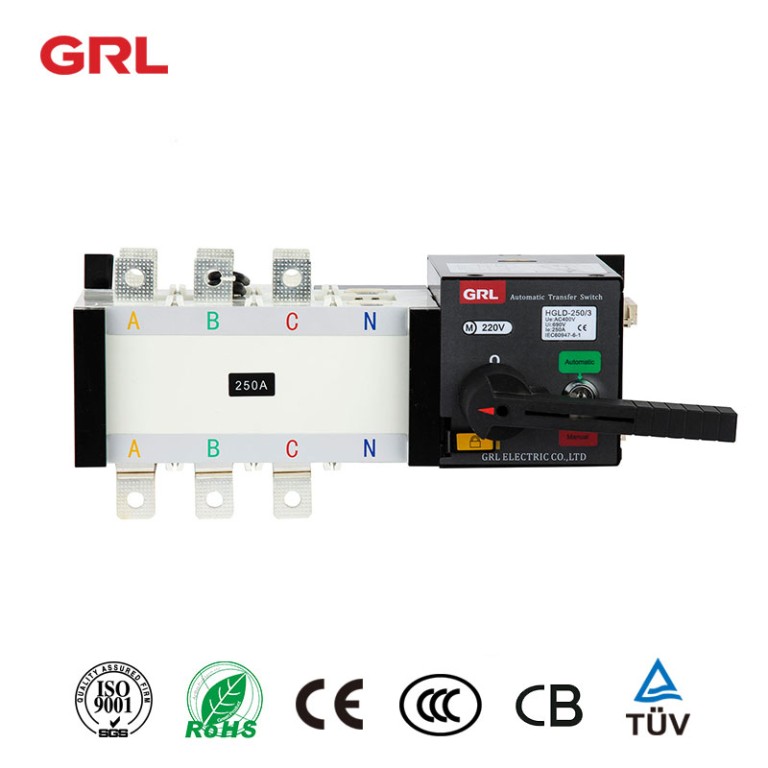
# Automatic Transfer Switch: Ensuring Uninterrupted Power Supply
## What is an Automatic Transfer Switch?
An Automatic Transfer Switch (ATS) is a critical component in backup power systems that ensures seamless transition between primary and secondary power sources. These devices automatically detect power failures and switch the electrical load to a standby generator or alternative power source without human intervention.
## How Does an ATS Work?
The operation of an automatic transfer switch follows a simple yet effective process:
– Continuous monitoring of the primary power source
– Immediate detection of power outages or voltage fluctuations
– Automatic disconnection from the primary source
– Signal sent to start the backup generator
– Transfer of electrical load to the secondary source once stable power is available
– Continuous monitoring for restoration of primary power
– Automatic transfer back to primary source when power is restored
## Key Benefits of Automatic Transfer Switches
### 1. Uninterrupted Power Supply
The primary advantage of an ATS is its ability to maintain continuous power to critical systems. Hospitals, data centers, and industrial facilities rely on this uninterrupted power to prevent costly downtime and potential safety hazards.
### 2. Fast Response Time
Modern ATS units can detect power failures and initiate transfer within seconds, minimizing disruption to sensitive equipment and operations.
### 3. Safety Features
Automatic transfer switches include built-in safety mechanisms such as:
– Protection against backfeeding
– Proper isolation between power sources
– Voltage and frequency monitoring
– Load shedding capabilities when necessary
## Types of Automatic Transfer Switches
### 1. Open Transition ATS
Also known as “break-before-make” switches, these briefly interrupt power during transfer, suitable for most commercial applications where a momentary outage is acceptable.
### 2. Closed Transition ATS
Keyword: Transfer Switch
“Make-before-break” switches maintain continuous power by briefly paralleling both sources during transfer, ideal for critical applications where even momentary interruptions are unacceptable.
### 3. Soft Loading Transfer Switch
These advanced switches gradually transfer load to minimize mechanical stress on generators and electrical systems.
## Applications of Automatic Transfer Switches
Automatic transfer switches find applications in various sectors:
– Healthcare facilities (hospitals, clinics)
– Data centers and telecommunications
– Industrial manufacturing plants
– Commercial buildings
– Emergency services (fire stations, police departments)
– Residential properties with backup generators
## Choosing the Right ATS for Your Needs
When selecting an automatic transfer switch, consider these factors:
– Electrical load requirements
– Number of power sources
– Transfer time requirements
– Environmental conditions
– Compliance with local electrical codes
– Future expansion possibilities
## Maintenance Considerations
Proper maintenance ensures reliable operation of your ATS:
– Regular testing of transfer functionality
– Inspection of electrical connections
– Cleaning of contacts and components
– Verification of control logic and settings
– Lubrication of mechanical components as needed
## The Future of Transfer Switch Technology
Advancements in ATS technology include:
– Integration with smart grid systems
– Enhanced monitoring and remote control capabilities
– Improved energy management features
– Smaller, more efficient designs
– Better compatibility with renewable energy sources
Automatic transfer switches play a vital role in modern power infrastructure, providing the reliability and peace of mind that comes with knowing your critical systems will remain operational during power outages. Whether for commercial, industrial, or residential applications, investing in the right ATS solution ensures business continuity and protects valuable equipment from power-related damage.